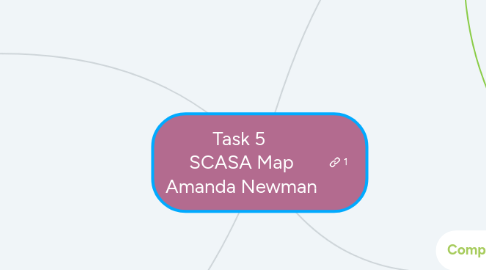
1. Coding
1.1. Algorithms
1.2. Patterns
1.3. Sequencing Data
2. Curriculum Links
2.1. Knowledge and Understanding
2.1.1. F-2
2.1.1.1. Data can have patterns and can be represented as pictures and symbols (ACTDIK002)
2.1.2. 3-4
2.1.2.1. Different types of data can be represented in different ways (ACTDIK008
2.1.3. 5-6
2.1.3.1. Data is represented using codes (ACTDIK015)
2.2. Processes and Production Skills
2.2.1. F-2
2.2.1.1. Collect and use data of any kind (ACTDIP003)
2.2.1.2. Generate and record design ideas through describing, drawing, modelling and/or a sequence of written or spoken steps (WATPPS02)
2.2.2. 3-4
2.2.2.1. Collect and present different types of data using simple software to create useful information (ACTDIP009)
2.2.2.2. Use visually represented sequenced steps (algorithms), including steps with decisions made by the user (branching) (ACTDIP011)
2.2.2.3. Create a sequence of steps to solve a given task (WATPPS16)
2.2.3. 5-6
2.2.3.1. Design solutions to a user interface for a digital system (ACTDIP018)
2.2.3.2. Design, follow and represent diagrammatically, a simple sequence of steps (algorithm), involving branching (decisions) and iteration (repetition) (ACTDIP019)
2.2.3.3. Implement and use simple programming environments that include branching (decisions) and iteration (repetition) (ACTDIP020)
3. Curriculum Links
3.1. F- 2
3.1.1. Follow, describe and represent a sequence of steps and decisions (algorithms) needed to solve simple problems (ACTDIP004)
3.2. 3-4
3.2.1. Define simple problems, and describe and follow a sequence of steps and decisions (algorithms) needed to solve them (ACTDIP010)
3.2.2. Implement simple digital solutions as visual programs with algorithms involving branching (decisions) and user input (ACTDIP011)
3.3. 5-6
3.3.1. Design a user interface for a digital system (ACTDIP018)
3.3.2. Design, modify and follow simple algorithms involving sequences of steps, branching and iteration (repetition) (ACTDIP019)
3.3.3. Implement digital solutions as simple visual programs involving branching, iteration (repetition) and user input (ACTDIP020)
4. Computational Thinking
4.1. Problem Solving
4.2. Creativity
4.3. Collaboration
4.4. According to Roberts, K. (2018) Lecture 3, it is defined as "A problem solving method that involves various techniques and strategies that can be implemented by digital systems".
4.4.1. Strategies include: breaking down problems, organising data, using algorithms, patterns and models
4.5. Communication
4.6. Computing
4.7. Critical Thinking
4.8. Types of Computational thinking
4.8.1. Abstraction
4.8.2. Decomposition
4.8.3. Pattern Recognition
4.8.4. Algorithm Design
